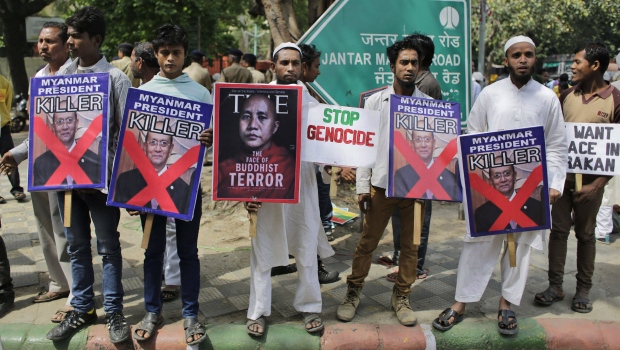
Known for its transition to democracy around the charismatic figure of Aung San Suu Kyi, as well as for its ancient Buddhist culture, Myanmar (formerly known as Burma) has also made headlines in recent years due to severe anti-Muslim violence [see Oct. 2015 RW]. But other religious minorities are also raising the issue of discrimination writes Melissa Crouch (University of New South Wales) in the current issue of The Review of Faith & International Affairs (Winter 2015). The country’s legal system actually recognizes personal law for Buddhists, Muslims, Hindus and Christians. Since 2013, there have been discussions in view of enacting a new law regulating inter-religious marriage between Buddhists and non-Buddhists; heated debates on the topic had already taken place as early as the late 1930s. These debates surface again and again, although there is little evidence of a rise in such marriages. Reactions against Muslims are largely also reactions against the perceived “invasion” of Bengalis and the related inability of the state to stop the inflow writes Tharaphi Than (Northern Illinois University).

While it is difficult to assess if net migration is really taking place, any incident can easily fan the flames in such a context of mistrust. Buddhist groups justify violence as being defensive in order to protect race and religion, while militant Buddhist groups categorize non-Buddhists (especially Muslims with Bengali origins) as “wrong believers” and see them as a security threat. Due to the sensitivity on the Muslim issue, the government has delayed the release of the 2014 census data, so the 1983 census remains the only available overview. At that time, there were 3.9 percent Muslims, mostly Sunnis, with those of Bengali origin whose citizenship has not yet been recognized making up half of this population. If the proportion has remained stable, Muslims would now make up some 2 million out of 51.5 million inhabitants. But some Muslim leaders claim that the Muslim population is greatly underestimated and might be above 10 percent. Christians comprise around 4 percent of Myanmar’s population (3 percent Protestant, with Baptists as the largest group, and 1 percent Catholic), but their importance in social and political life is larger than what those percentages suggest: out of 629 members of the two houses of national Parliament, there are 45 Christians reports Benedict Rogers (Christian Solidarity Worldwide). She adds that how they will contribute shaping future legislation will be a test of Christianity’s influence on society.
The latest issue of Hinduism Today magazine (January-March) also features Myanmar with a 17-page long, richly illustrated travel report by Rajiv Malik. The article claims 2.9 million Hindus in the country, with Tamils comprising the largest group, although some other sources quote lower figures. Those Hindus originate not only from India as there is also a significant Hindu population with roots in Nepal. In contrast with hundreds of thousands of Buddhist monks promoting Buddhism, “there is not a single Hindu sadhu or swami, either Myanmar-born or sent from India,” Malik writes (though, of course, there are priests performing the rituals in temples and institutions for training them). According to the report, the strongest organizational Hindu presence nationwide is the Sanatan Dharma Swayamsevak Sangh (SDSS), an organization founded in 1950 and affiliated with Hindu nationalist Rashtriya Swayamsevak Sangh (RSS) in India. Local Hindu temples are said to be popular with Buddhists as well. This shared worship helps to prevent frictions between both groups, Malik suggests—although there have been cases of Buddhist preachers critical of Hinduism, and hundreds of thousands Indians were expelled in the 1960s.
(The Review of Faith & International Affairs, P.O. Box 12205, Arlington, VA 22219-2205, www.tandfonline.com/rfia; Hinduism Today, 107 Kaholalele Road, Kapaa, Hawaii 96746-9304, www.hinduismtoday.com)